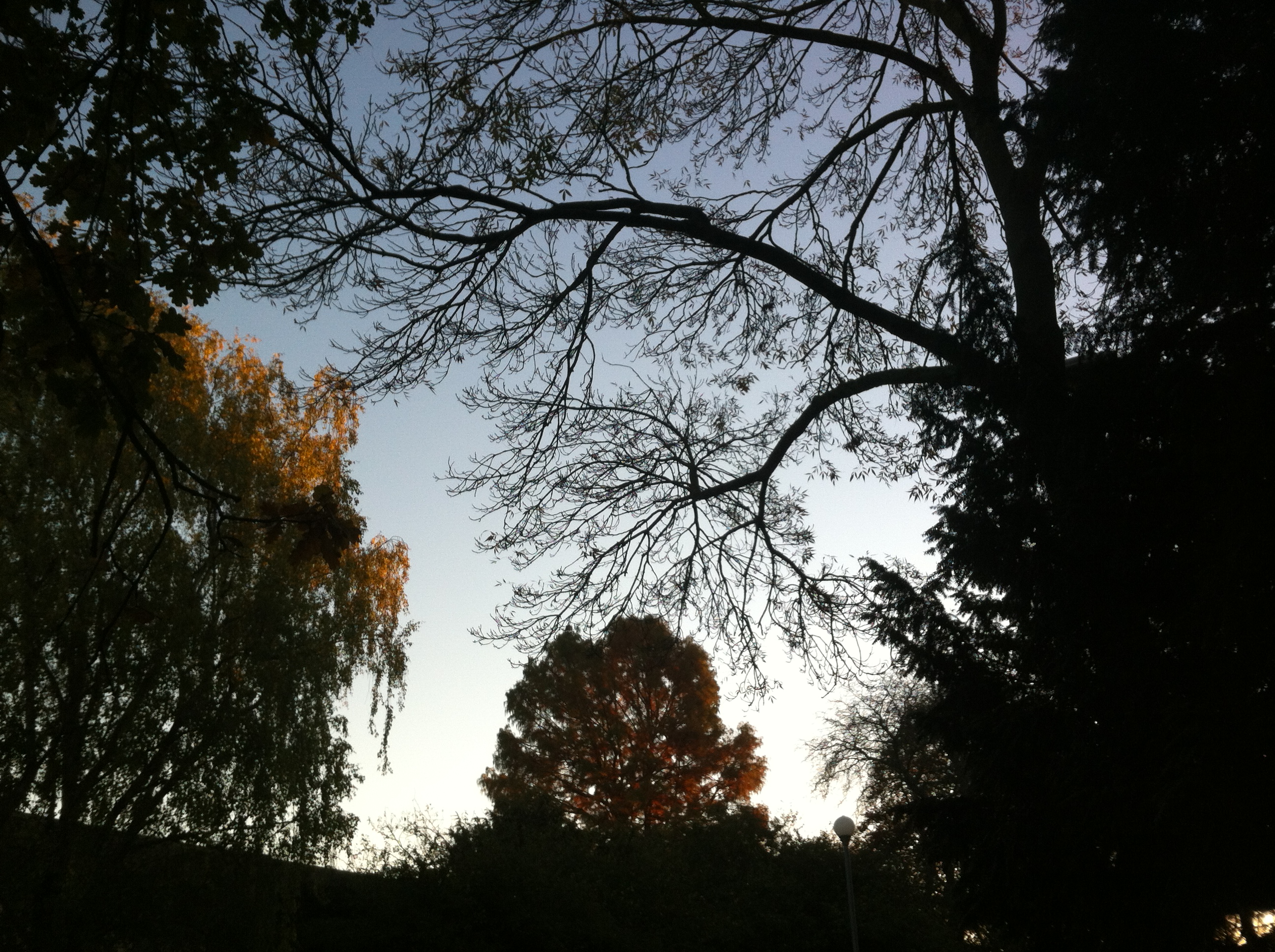All time belongs to him.
by Sr Ann Catherine Swailes
Autumn days
Every year in Oxford, on 1st May, crowds gather in the early morning outside Magdalen College. At precisely 6am, the chapel choir appears at the top of the tower, singing hymns and madrigals to welcome the coming summer.
Church bells ring throughout the city, cafes offer champagne breakfasts, the streets are full of Morris Dancers, and students stumble happily back to their colleges after a night of revelry. Like many Oxford graduates, I have very fond memories of May Morning, but why is it on my mind today? What has May in Oxford to do with November in Cambridge?
It just so happened that a hymn we sang at Morning Prayer in our convent chapel this week was set to the tune used by the Magdalen choristers every year to open their tower-top programme, and it came as a shock. This was a song to greet the dawn of warm, bright days, filled with hope and anticipation and sunshine; surely it didn’t belong in the gloom of a dank autumn morning which seemed to promise only drizzle and despondency? But perhaps the contradiction between the music and my mood hints at something to ponder as we come towards the end of the liturgical year: the relationship between the natural seasons and the Church’s calendar.
That relationship is an intriguing one. Sometimes – at any rate in the Northern hemisphere - the two appear reassuringly in step. We commemorate the dead in November, for instance, as the light wanes, leaves wither, the year itself grows old. May, by contrast, is traditionally devoted by Catholics to honouring Our Lady, the fecundity and freshness of nature in spring providing an image of Mary, pregnant with the new life of Christ.
All of this says something very important about the goodness of the creation which thus fittingly provides a kind of commentary on the history of the good God’s dealings with his people. That is a truth that stands at the very heart of our Christian faith. But it should never be told in isolation from another, less consoling one. The goodness of God and his creation is for all of us sometimes obscured by the darkness of suffering; our minds and our bodies malfunction, are wounded by our own and others’ misuse of them. Without denying the goodness of creation, indeed all the more poignantly because of that goodness, we know, desperately, our need of rescue, both from the mess we make of ourselves and our world, and from the limits imposed on us simply by our status as creatures, frail and doomed to die.
Yet here, too, the rhythms of the liturgical year, in this case not mirroring, but cutting across those of the natural seasons, are a source of hope. It is at the darkest point in the year, when the days are shortest, when energy is at its lowest ebb and spring seems furthest away, that God comes to us at Christmas, to free us from our sin and weakness, and thus bring us to heaven to make us fully alive with his own unquenchable life. Perhaps that is why Medieval Christmastide poetry is so full of unseasonal imagery: roses blooming at midnight in midwinter; cherries miraculously provided for the shepherds to take as a gift to the child in the manger. Maybe it can also help us to see our dark November days glowing with the light of spring. The Lord is coming, at an hour and in a way we do not expect. Words like these, which will soon loom large in our Advent liturgy, are words not of threat, but of promise. He will confound and exceed all our expectations when he comes, bestowing strength and joy in a measure we dare not imagine. And the appropriate response to that is surely to break forth into joyful song. Even the odd fa-la-la may not be out of place.
Sr Ann
